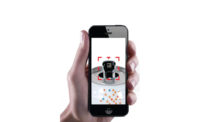While some may say a flexible package will always be “just a package,” flexible packaging converters can look at the digital evolution that took place in commercial printing and label converting to see how digital printing technology will transform their industry in the coming years.
No one can predict the future of the flexible packaging industry because many factors influence packaging at any given time. The way a flexible package fulfills brands owners’ requirements, how it looks, and how it will be produced has evolved and will continue to evolve moving forward. However, the need for high print quality, reliability and versatility will remain constant for flexible packaging converters of today and tomorrow.
To map out a growth strategy, converters need a clear picture of future packaging requirements, an understanding of brand owners’ expectations, and knowledge regarding the latest capabilities of digital print and other innovative technologies. Many converters are building growth strategies around digital print technologies, while some early adopters have already integrated digital presses into their current operations.
Will this be a revolution of replacing current flexo equipment with digital, or will it be more of an evolution of new products and technologies integrated with more traditional means of production? No one knows for sure, but studying trends in similar industries can provide perspective.
Learning from the Past
Let’s start by examining the general commercial printing and label converting industries to learn from changes that took place when digital equipment was first introduced.
Commercial printers who understood printing trends and spotted the growth opportunities were early investors in digital presses. They reaped the benefits by being able to deliver on more profitable, short-run jobs with fast turnaround times. Likewise, digital presses allowed enterprising label converters to offer short-run labels, with the benefit of versatility and reliable color matching.
Commercial printers and label converters alike were enticed by many of the same benefits that packaging converters find attractive about digital printing: no plates, minimal setup time, fast turnaround, the ability to easily incorporate variable data and the advantages of advanced color matching. In addition, digital technology offered a new cost model, allowing commercial printers and converters to print only what was needed, while traditional runs resulted in large amounts of waste and expensive storage.
Flexibility was key to digital success in general commercial printing and label converting. The same is true for packaging, particularly in terms of substrates. This can be seen clearly in the top three segments – flexible packaging, boards and rigid plastics – all of which vary greatly in thickness and printing methodology.
The same digital opportunity created for general commercial printing and the labels market is now available for the flexible packaging market.
Understanding the Contrasts: Then vs. Now
At first, commercial printers and label converters struggled with digital technology as it matured into a robust and reliable method of production. Now packaging converters are actually benefitting from the early adopters. As digital print technology penetrates the packaging industry, it is a much more robust and stable technology with a large array of leading workflow and finishing partners. Other differences also point toward accelerated integration of digital print technology in the packaging industry:
- Technology – Packaging converters are getting a mature, dependable technology compared to a decade ago.
- Design – Brands are driving complex, cost-effective designs that may require digital technology to produce. This is quite different from commercial printers and label converters who needed to train their sales team and then sell their customers on the advantages of digital printing.
- Job mix – Converters have few surprises when it comes to job types compared to commercial printers, who can encounter many different job types in the course of a day.
- Run length – Long-run lengths continue to make up the majority of packaging jobs, but the growth opportunities going forward point to shorter-run lengths and package lifecycles.
- Existing equipment – Flexo equipment offers a good quality and cost-effective solution for long runs that will have a role in packaging converting for the foreseeable future. For many commercial printers and label converters, offset printing requires large volumes and has low margins, making it increasingly difficult to commercially justify some offset operations.
Flexible packaging converters will benefit from the learning of early adopters, which will help better define what should move to digital. This will accelerate the growth of digital packaging printing.
Responding to Today’s Brand-owner Needs with Digital Printing Technology
A variety of factors favor growth in digital packaging printing. These range from the required information on labels, cartons and flexible packaging to track-and- trace information. Additionally, the rise of social media is enabling highly targeted versioned and personalized campaigns.
Also driving growth in this segment is increased demand from brands and the strict guidelines they require packaging converters to adhere to. Unlike commercial printers who have all types of customers, flexible packaging converters are generally driven by brands.
In general, brands demand:
- Global solutions – International marketing campaigns require an international network of converters that provide consistent quality and color matching at any quantity.
- SKU proliferation – There are more versions than ever for each product. Multiply that by different languages and regional requirements and it becomes quite challenging. Packaging converters deal with more and more short runs, and they need to use their existing high-speed solutions for long jobs only.
- Reduced costs – Economic pressure has resulted in efforts to reduce costs across the supply chain. Shorter runs, just-in-time delivery, minimal inventory and geographical proximity to production sites are all key factors.
- Mass customization and versioning – Event-driven marketing has resulted in many customized runs that demand fast turnaround times. Additionally, the retail channel often requires versioning to ensure differentiation from chain to chain.
The trend is to connect with consumers using shorter, time-specific targeted runs on a broad range of substrates, while maintaining the same high-quality standards and exact color matching for the brand’s standard, long-run packaged products. Flexible packaging converters who recognize this trend will equip themselves with the tools necessary to serve brands. These tools include digital presses, automated workflows, new finishing capabilities and the systems necessary to provide just-in-time deliveries and customized flexible packaging.
As more marketers, designers and brands learn of the capabilities of digital printing for flexible packaging, they will begin to leverage those techniques to differentiate their products and drive sales by extending marketing campaigns into the packaging itself.
Understanding the advantages of digital adoption for package converters today compared to what was available for commercial printers and label converters of yesterday, along with the evolving demands of brand customers, it seems clear that digital printing represents a growth opportunity for flexible packaging converters.
HP
(858) 655-4593; www.hp.com/go/gsb/



